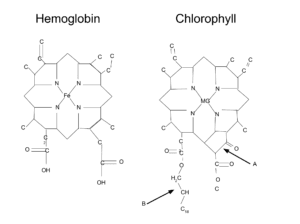Magnesium: Now You See It, Now You Don’t
First of all: I’m a massage therapist, not a nutritional expert. I deal with muscles, so everything I’ve learned about magnesium and supplements generally, I’ve learned from experienced naturopaths, nutritionists and dieticians. Really, all I’m doing is parroting them.
If you think you have a magnesium deficiency, the best possible thing you can do is see one of these professionals. For this reason I am not going to recommend any specific products or brands in this article, I’m just going to make the case for why it is so critical to your muscles, your productivity, your health, and your state of mind.
If you’d like to see a professional diet expert in Melbourne, shoot me a message and we’ll find one who is right for you. I have several who I highly recommend.

Why magnesium is important
Magnesium is essential for over 300 cellular functions including the conversion of glucose into usable energy. Relevant to muscle function, it also acts like a molecular key in the de-coupling of contractile proteins in muscles – that is, it is critical for the muscles to be able to physically let go and relax.[footnote]Potter Jd , Et Al. (1981). Magnesium and the regulation of muscle contraction. – PubMed – NCBI. Ncbi.nlm.nih.gov. Retrieved from https://www.ncbi.nlm.nih.gov/pubmed/7286246[/footnote]
Not enough magnesium = low energy, fatigue, tight muscles, and sometimes cramping.
Low magnesium is also associated with higher stress and possibly disrupted sleep and depressed mood.
There is also some suggestion that low magnesium could be part of the puzzle of migraines and headaches.
So you can see how important it is!
How Magnesium Operates
Magnesium is really easy for your body to take up, and really easy for it to use up. High stress or periods of low stress that drag on for ages; high physical activity; illnesses; and/or poor diet can all create a deficiency. When more than one of these factors stacks up on top of others at the same time, a deficiency is pretty guaranteed.[footnote]Durlach J (1989). Recommended dietary amounts of magnesium: Mg RDA. – PubMed – NCBI. Ncbi.nlm.nih.gov. Retrieved from https://www.ncbi.nlm.nih.gov/pubmed/2701269[/footnote]
More info: https://ods.od.nih.gov/factsheets/Magnesium-HealthProfessional/
Magnesium from foods
Some people believe that we should be able to get all of our nutritional requirements from food. Ideally, this would be true. However, we don’t live on the African savannas eating wild fruits and veggies any more, we live in noisy, high-stress, polluted cities and eat commercially grown produce and a sizable amount of processed foods. Caffeine and alcohol can also inhibit the uptake of several nutrients, including magnesium.
Your ability to get everything you need, even from a good diet, can vary wildly depending on where your food comes from. One source suggests that the high potassium content in commercial fruits and vegetables (a result of heavy fertiliser use) might lead to a decrease in the bioavailability of magnesium in foods.[footnote]Merhaut, D.J. (2006). “Magnesium”. In Barker A.V.; Pilbeam D.J. Handbook of plant nutrition. Boca Raton: CRC Press. p. 154. ISBN 9780824759049.[/footnote] So your fruits and veggies might look big and juicy, but they may not contain nutrients that your body can absorb.
But assuming you have good quality foods available, food sources of magnesium include but are not (at all) limited to:[footnote]HealthAliciousNess (n.d). Top 10 High Magnesium Foods You Can’t Miss. HealthAliciousNess. Retrieved from https://www.healthaliciousness.com/articles/foods-high-in-magnesium.php[/footnote]
- very dark chocolate – 80% or more of cacao be mindful of sugar content)
- nuts and seeds, especially green pumpkin seeds a.k.a. pepitas
- beans and lentils, especially fresh soy beans and French lentils
- any green leafy vegetables – the greener the better, so kale is great
- deep-sea fish like mackerel (please buy from sustainable fisheries)

Chlorophyll, the molecule in plants that makes leaves green and enables photosynthesis and carries carbon, is basically the same molecule as haemoglobin, the molecule that makes your blood red and carries oxygen. The only real difference is that the atom at the centre of chlorophyll is magnesium and that at the centre of haemoglobin is iron. How cool is that?!
So, the greener the vegetable, the higher the magnesium. Eat your greens!
Not all magnesium supplements are equal!
Generally speaking, if it’s a cheap supplement, it probably won’t help you much. This is especially true in the case of magnesium.
The most common types of magnesium available are—
1. Magnesium oxide – mostly useless
Simple molecule that relies on passive diffusion to cross your intestinal walls. Absorbing it is basically luck – uptake is about 4 to 8%.[footnote]Ranade Vv And Somberg Jc (2001). Bioavailability and pharmacokinetics of magnesium after administration of magnesium salts to humans. – PubMed – NCBI. Ncbi.nlm.nih.gov. Retrieved from https://www.ncbi.nlm.nih.gov/pubmed/11550076?dopt=Abstract[/footnote] [footnote]Mühlbauer B , Et Al. (1991). Magnesium-L-aspartate-HCl and magnesium-oxide: bioavailability in healthy volunteers. – PubMed – NCBI. Ncbi.nlm.nih.gov. Retrieved from https://www.ncbi.nlm.nih.gov/pubmed/2050185?dopt=Abstract[/footnote]
Cheap to make and shows up in a lot of supps. Commonly used as a laxative.
2. Magnesium citrate – value for money
Probably the best value-for-money magnesium form. Chemically speaking this is a magnesium salt attached to a citric acid molecule, and your body will recognise and actively transport citric acid across your intestinal walls (with the magnesium attached to it). Highly bio-available (about 60–80%) [footnote]Lindberg Js , Et Al. (n.d). Magnesium bioavailability from magnesium citrate and magnesium oxide. – PubMed – NCBI. Ncbi.nlm.nih.gov. Retrieved from https://www.ncbi.nlm.nih.gov/pubmed/2407766[/footnote] – but – can have a laxative effect in some people. This laxative effect is often linked to the level of fibre in your diet.
3. Magnesium amino acid chelates – the best of the best
The best form of supplemental magnesium. The magnesium is attached to a large amino acid molecule – usually a glycinate, lactate, aspartate or arginate. Your body recognises and grabs these useful aminos, actively transporting them from your intestines into your bloodstream. They are present in many foods, so they are presented to your body as they would be in a normal food source. You absorb 80–90% of the magnesium.
Solid research tells us that the best of the best is an amino acid chelate formed with bisglycinate or diglycinate. If you see those words on the label, you’re onto a winner.
It’s a cheap and safe experiment
It’s pretty much impossible to overdose on magnesium. In fact, the only down-side is that some magnesium supplements might make your digestion speed up and result in loose stools. That’s about as bad as it gets.[footnote]Healthline (2015). Magnesium Overdose: What’s the Likelihood?. Healthline. Retrieved from http://www.healthline.com/health/food-nutrition/magnesium-overdose-whats-the-likelihood[/footnote]
For this reason, it’s a useful experiment to run for very little cost. For less than $15 you can get yourself a magnesium citrate supplement from the grocery store or chemist, and take it daily.
According to the Australian National Health and Medical Research Council (NHMRC), the recommended daily intake for magnesium is a conservative 320mg of elemental magnesium per day for an adult female, and 420mg for an adult male,[footnote]Australian National Health and Medical Research Council (9 Apr. 2014). Magnesium | Nutrient Reference Values. Nrv.gov.au. Retrieved from https://www.nrv.gov.au/nutrients/magnesium[/footnote] so start there. For example, if your supplement is 150mg per tablet, take two to three each day for at least a week. Try to space them out to avoid the laxative effect, so one per main meal is an ideal strategy. This strategy will also help your body to take up magnesium as it gets used.
If you notice that your muscles work better, you cramp less, your mood is improved, your skin looks better, you have fewer headaches, and/or your energy starts to level out, you might have had a magnesium deficiency. Good to know! Now you know how to deal with it.
At that point, it becomes useful to see a nutritional expert to find out which specific type of magnesium will work best for your situation.
For example, if you do a lot of exercise then you might need an aspartate or orotate, rather than citrate or glycinate.
If you get a lot of headaches, magnesium may help but you may also need other things to complement it and make it more effective. Talk to a nutritional expert.
So start with a straight magnesium supplement and see how you go. It might be the missing link you’ve been looking for.
Sources:
- Potter Jd , Et Al. (1981). Magnesium and the regulation of muscle contraction. – PubMed – NCBI. Ncbi.nlm.nih.gov. Retrieved from https://www.ncbi.nlm.nih.gov/pubmed/7286246
- Durlach J (1989). Recommended dietary amounts of magnesium: Mg RDA. – PubMed – NCBI. Ncbi.nlm.nih.gov. Retrieved from https://www.ncbi.nlm.nih.gov/pubmed/2701269
- Merhaut, D.J. (2006). “Magnesium”. In Barker A.V.; Pilbeam D.J. Handbook of plant nutrition. Boca Raton: CRC Press. p. 154. ISBN 9780824759049
- HealthAliciousNess (n.d). Top 10 High Magnesium Foods You Can’t Miss. HealthAliciousNess. Retrieved from https://www.healthaliciousness.com/articles/foods-high-in-magnesium.php
- Hoorn Ej And Zietse R (2013). Disorders of calcium and magnesium balance: a physiology-based approach. – PubMed – NCBI. Ncbi.nlm.nih.gov. Retrieved from https://www.ncbi.nlm.nih.gov/pubmed/23142866
- Abrams Sa , Et Al. (1997). Calcium and magnesium balance in 9-14-y-old children. – PubMed – NCBI. Ncbi.nlm.nih.gov. Retrieved from https://www.ncbi.nlm.nih.gov/pubmed/9356535
- Healthline (2015). Magnesium Overdose: What’s the Likelihood?. Healthline. Retrieved from http://www.healthline.com/health/food-nutrition/magnesium-overdose-whats-the-likelihood
- Australian National Health and Medical Research Council (9 Apr. 2014). Magnesium | Nutrient Reference Values. Nrv.gov.au. Retrieved from https://www.nrv.gov.au/nutrients/magnesium

